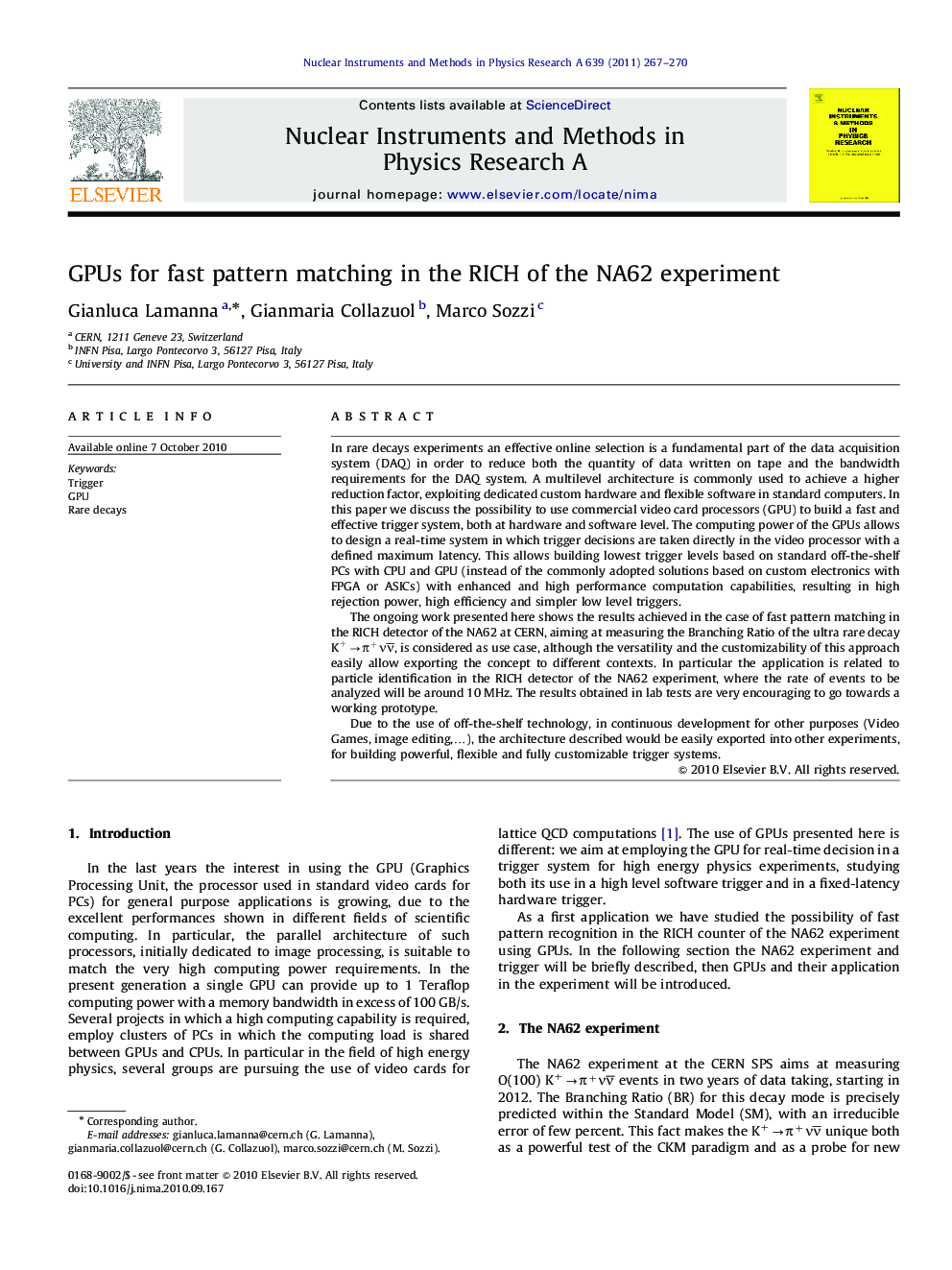| Article ID | Journal | Published Year | Pages | File Type |
|---|---|---|---|---|
| 1825295 | Nuclear Instruments and Methods in Physics Research Section A: Accelerators, Spectrometers, Detectors and Associated Equipment | 2011 | 4 Pages |
In rare decays experiments an effective online selection is a fundamental part of the data acquisition system (DAQ) in order to reduce both the quantity of data written on tape and the bandwidth requirements for the DAQ system. A multilevel architecture is commonly used to achieve a higher reduction factor, exploiting dedicated custom hardware and flexible software in standard computers. In this paper we discuss the possibility to use commercial video card processors (GPU) to build a fast and effective trigger system, both at hardware and software level. The computing power of the GPUs allows to design a real-time system in which trigger decisions are taken directly in the video processor with a defined maximum latency. This allows building lowest trigger levels based on standard off-the-shelf PCs with CPU and GPU (instead of the commonly adopted solutions based on custom electronics with FPGA or ASICs) with enhanced and high performance computation capabilities, resulting in high rejection power, high efficiency and simpler low level triggers.The ongoing work presented here shows the results achieved in the case of fast pattern matching in the RICH detector of the NA62 at CERN, aiming at measuring the Branching Ratio of the ultra rare decay K+→π+νν¯, is considered as use case, although the versatility and the customizability of this approach easily allow exporting the concept to different contexts. In particular the application is related to particle identification in the RICH detector of the NA62 experiment, where the rate of events to be analyzed will be around 10 MHz. The results obtained in lab tests are very encouraging to go towards a working prototype.Due to the use of off-the-shelf technology, in continuous development for other purposes (Video Games, image editing,…), the architecture described would be easily exported into other experiments, for building powerful, flexible and fully customizable trigger systems.
